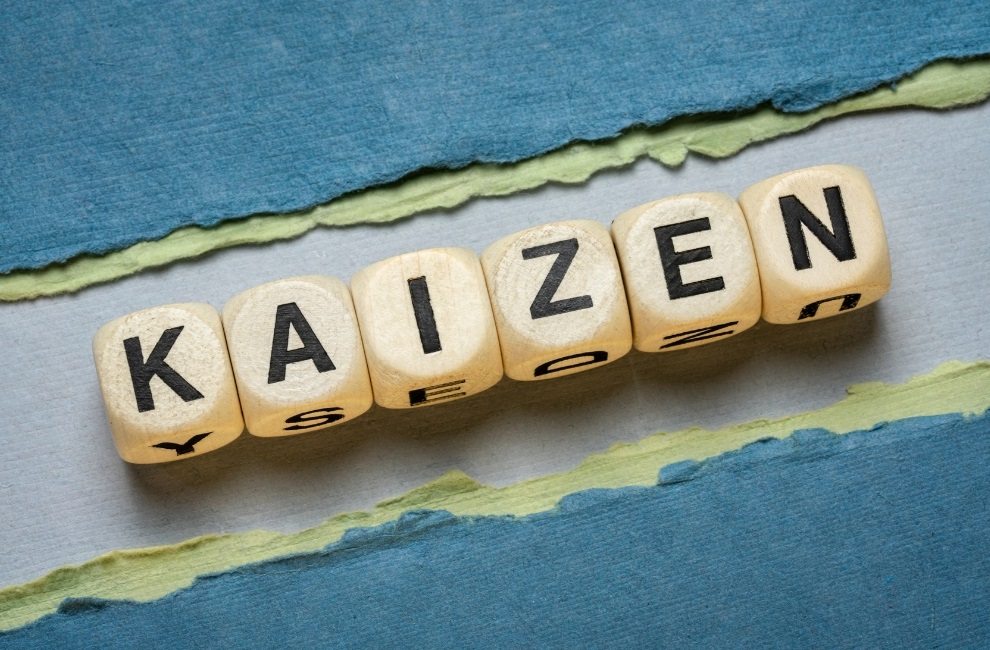Kaizen and OEE: Continuous Improvement in Manufacturing Processes
Improving efficiency in manufacturing does not always require big changes. Often, small but consistent improvements are the key to success. Kaizen is a concept that focuses on continuous process improvement to reduce waste, increase efficiency, and enhance quality. When Kaizen is combined with OEE (Overall Equipment Effectiveness)—a tool to measure and monitor machine performance—businesses can achieve sustainable and effective long-term improvements.
In this article, we explore how Kaizen and OEE work together to improve production efficiency and drive long-term business success.

What is Kaizen?
Kaizen is a Japanese concept of continuous improvement in manufacturing. It focuses on making improvements at every level and in every area of an organization. A key idea in Kaizen is to involve all employees in suggesting better ways to work. The goal is to make processes easier, more efficient, and to continually reduce waste.
What is OEE?
OEE (Overall Equipment Effectiveness) is a tool used to measure the efficiency of machines in a production line. It is based on three main factors: availability – how often the machine is ready to run, Performance – how fast the machine runs compared to its maximum speed, Quality – how many good parts are produced without defects.
OEE helps production managers see the full picture of machine performance and identify areas for improvement.
Improving OEE with Kaizen Principles
1. Reducing Downtime (Improving Availability)
A major part of Kaizen is reducing unplanned downtime. Employees on the production line are encouraged to share ideas on how to prevent machine stops—such as improving maintenance or creating better problem-solving plans.
2. Improving Work Efficiency (Improving Performance)
Kaizen supports regular checks of production processes to reduce time wasted on inefficient tasks like unnecessary machine stops, waiting times, or overly complex procedures. This helps improve machine performance and minimize wasted time.
3. Maintaining Product Quality (Improving Quality)
Improving product quality is central to Kaizen. Through regular problem analysis and continuous fixes, teams can maintain high standards, reduce defects, and increase the value of each product made.
4. Employee Training and Skill Development
Kaizen improvements don’t rely on machines alone. Developing employee knowledge and skills through training—on machine operation, maintenance, and problem-solving—helps improve OEE in the long run.
5. Deep Problem Analysis Using the PDCA Cycle
Kaizen uses a structured method called the PDCA Cycle (Plan-Do-Check-Act) to support continuous improvement. By planning, testing, adjusting, and repeating, teams constantly improve processes. This method fits well with OEE tracking.
Benefits of Combining Kaizen and OEE
1. Ongoing Improvements
Kaizen encourages continual OEE improvement across all departments, leading to long-term efficiency gains.
2. Reduced Waste and Lower Costs
By improving each production step, Kaizen helps reduce material waste and production costs.
3. Better Team Performance
Involving all employees in process improvement boosts teamwork and shared learning.
4. Proactive Maintenance
Kaizen promotes regular machine care and early problem detection, keeping equipment ready for use.
5. Higher Product Quality
Constant problem-solving raises product quality, reduces errors, and better meets customer expectations.
Conclusion
Combining Kaizen with OEE measurement helps improve production processes in a sustainable way. Small but steady improvements lead to reduced waste, lower costs, and higher product quality over time. This kind of continuous improvement helps your business become more competitive and grow steadily in the long term.





 TH
TH EN
EN
